#San Francisco Seals
Explore tagged Tumblr posts
Text

Yankees' rookie Joe DiMaggio receives the 1935 Most Valuable Player in the Pacific Coast League trophy from movie star Joe E. Brown at the Polo Grounds, July 18, 1936. DiMaggio played for the San Francisco Seals that year.
Photo: Associated Press via Stadium Talk
#vintage New York#1930s#Joe DiMaggio#vintage baseball#MVP#July 18#18 July#Polo Grounds#San Francisco Seals#Joe E. Brown#vintage NYC
56 notes
·
View notes
Text

0 notes
Text

Article
As he peered over a secluded cove off the coast of San Francisco, Gerry McChesney couldn’t believe the scene that was unfolding in front of him.
Fur seal pups — hundreds of them — had taken over the inlet at the Farallon Islands National Wildlife Refuge and were bobbing on the surface of the water in a shiny, blubbery mass, likely hiding from great white sharks as they waited for their mothers to return from the sea to nurse. The sight wasn’t exactly unheard of — island biologists at Point Blue Conservation Science had first noticed the older seal pups using the cove as a covert hideout sometime last year, McChesney, a manager for the refuge, told SFGATE. But he was on the island one day in late October when biologist Jim Tietz delivered the news: The seals were back in full force, and in numbers they had never seen before.
McChesney decided to go take a look for himself.
“I was amazed to see them all piled in there, getting tossed around like they were in a washing machine,” he told SFGATE in an email, adding that he counted 440 in all. “They looked pretty content and like they were having a good ol’ time.”
The video McChesney captured was shared by the United States Fish and Wildlife Service on social media earlier this week, garnering thousands of comments on Instagram and Facebook, with users referring to the phenomenon as “seal pup daycare” and “nature’s mosh pit.”
To the biologists, it’s a sign of “a truly remarkable recovery.”
The rookery’s history
The Farallon Islands host one of just two fur seal rookeries south of Alaska (the other being San Miguel Island in Santa Barbara County) after the species was completely wiped out from the area in the early 19th century. There was extensive seal hunting between about 1810 and 1838... In the first few years of widespread hunting, he estimates that over 150,000 fur seals were slaughtered (“The rookery must have been huge,” he noted) and soon, no fur seals could be found at the islands at all.
But large-scale market hunting came to an end by the mid-19th century, he said. In 1911, the United States signed the Northern Fur Seal Treaty, banning the hunting of marine mammals at sea. The Marine Mammal Protection Act, which prohibits killing and disturbing animals including seals, was established in 1972, further aiding in the protection of the species. Two years later, 141 acres of the islands were designated the Farallon Wilderness and were closed to the public in an attempt to mitigate human disturbance so the seals could return and “breed unfettered,” McChesney said. Large breeding colonies still persisted on the Pribilof Islands, Alaska, and the Commander Islands off eastern Siberia, and in 1996, a female fur seal from a recovered colony on the Channel Islands made her way back to the Farallones, giving birth to the first fur seal pup there after more than 150 years of the species’ absence.
Since then, “the Farallon population has been growing rapidly,” McChesney said. Within 15 years, the local population had boomed to 476 individuals, Bay Nature reported in 2018. Initially, they clustered in one area on the west end of the islands — but now, they’re beginning to expand.

Pictured: A photo of a northern fur seal in Alaska.
A seal surge
Pupping season runs from June to August, with most of the seals born in July and remaining in the breeding colony for a few months before they are weaned, usually by the end of November. Then, the newly independent animals go out to sea on their own.
Farallon Island biologists from Point Blue Conservation Science have been documenting the population, and this year recorded 2,133 fur seals in total, including 1,276 pups, which McChesney called “the highest pup count yet.”
“Given that the entire colony can’t be seen, this was a minimal count and there were certainly many more,” he noted.
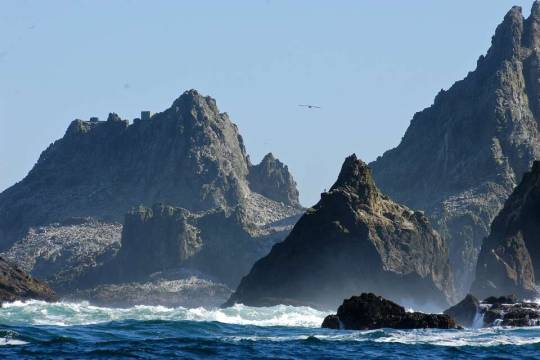
Pictured: The Farallon Islands off the coast of San Francisco.
Though Point Blue biologists have never documented white sharks feeding on fur seal pups (they typically go for juvenile northern elephant seals and sea lions) the “threat of shark attacks on the seal pups is certainly there and I’m sure the pups are aware of that,” McChesney said. “The cove where the video was taken provides a secluded spot to swim and play without worrying about the sharks.”
When the mothers return, they find their pups by using a distinctive call. But in the meantime, the pups seem not to mind the hours away in their secret hideout where they can splash and play to their hearts’ content.
“It was so much fun to watch,” McChesney said. “And knowing that the sight represents such an amazing comeback for their population made the sight mean so much more.”
-via SF Gate, December 23, 2024
#seals#fur seals#baby seals#marine life#baby animals#marine biology#california#san francisco#alaska#endangered species#wildlife conservation#united states#north america#good news#hope
2K notes
·
View notes
Text
People saying that Armand wore those slutty outfits as Fake Rashid purely for Daniel. Like Louis wasn’t picking out those outfits for Armand everyday🤨. Like they weren’t in a 24/7 Master/servant dynamic that didn’t even stop when Daniel WAS ALSEEP. Like Louis didn’t also know from reading Daniel’s thoughts he was lusting after Fake Rashid. It’s never too late to buy Loumandaniel stock!
#invest now!#like they didn’t even stop when there was no one else to perform for#Loumand you were insane. bonkers#the three of them will be connected forever. that night in San Francisco sealed their fates#I need to study their brains#louis de pointe du lac#daniel molloy#devils minion#Loumand#loumandaniel#armand#Louis feeding on Armand in front on Daniel for what reason??😭. freaks
68 notes
·
View notes
Note
Pheal, are you joining your dads on the US leg of the tour?
hi! thank you for your question. i'm not sure, they didn't take me this time around :/ but hopefully they will now!
i do miss the cuddles :'3
- pheal <3
#i would love to swim along in the US#i have so many places i want to see! i want to go to new york#and i want to see the florida man whoever he is#and i'd love to visit the sea lions in san francisco. i hear they are very similar to seals (:3 っ)っ#dan and phil#dnp#pheal#phandom#ask#answered#the pheal
56 notes
·
View notes
Text
oh to be a sea lion napping on a dock...
#video#mine#sea lion#sea lions#seal#seals#animals#cute#eepy#sleepy#nap time#san francisco#california#usa
31 notes
·
View notes
Text
it seems that every time I think to myself “hey, I’m really tired and/or having more joint pain than usual this Saturday morning. I’m still going to do my usual morning walk but I’ll keep it low-key today, maybe 30 minutes tops” I always end up doing some kind of parkour nonsense because there just happens to be a really interesting creature in the area that I don’t usually see there and I Need To Look At It
which is to say, I spent an hour and a half following a seal around the bay this morning
#out there persistance hunting I guess#scrambling around on rocks and such#forget whatever my knees are doing that’s a problem for future me#seals are common in San Francisco Bay in general just not the area where I usually go walking#shaky binocular photos of a seal mid-dive to be posted
17 notes
·
View notes
Text

Photo by Marshall Moxom. Rainy day in San Francisco, 1957
#vintage photos#old photos#sealed in time#historical photos#history photos#rare photos#vintage#photos#old#history#sealedintime#historical#photography#retro#classic#nostalgic#vintagephotos#oldphotos#historicalphotos#historyphotos#1950s#san francisco
11 notes
·
View notes
Text

Seal Rocks, circa 1950
67 notes
·
View notes
Text
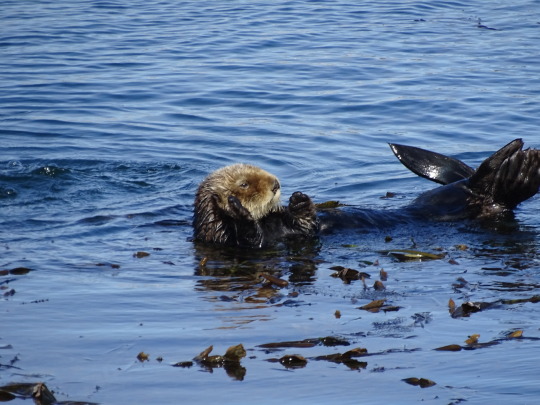

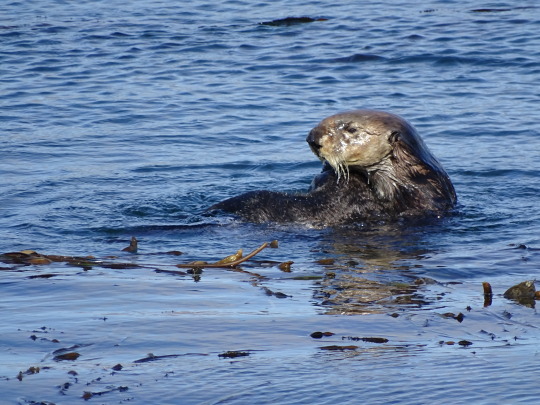
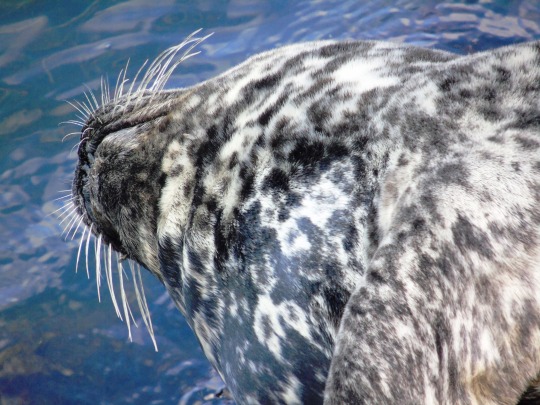

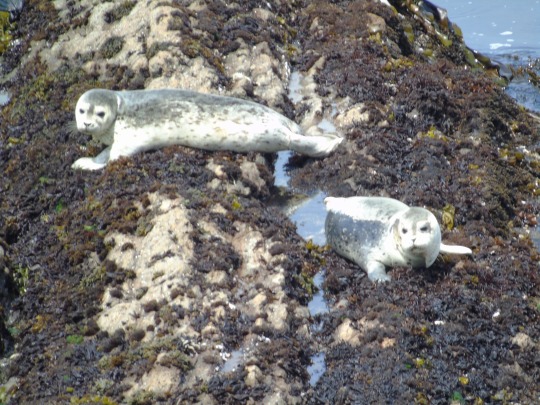
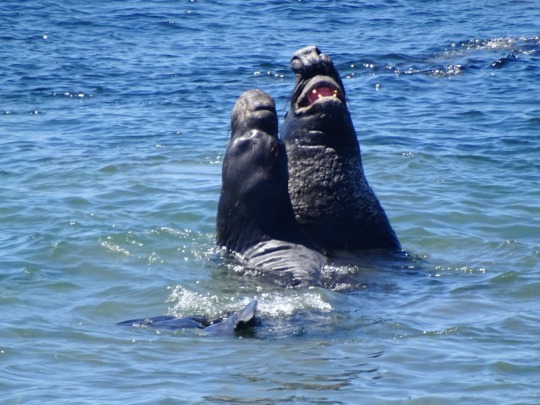
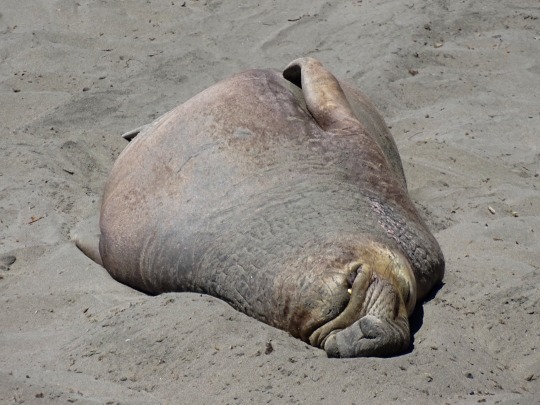
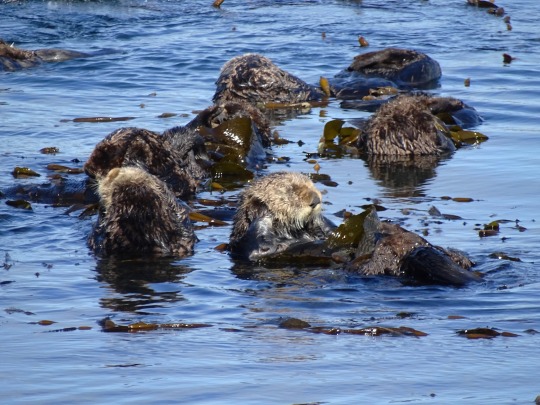

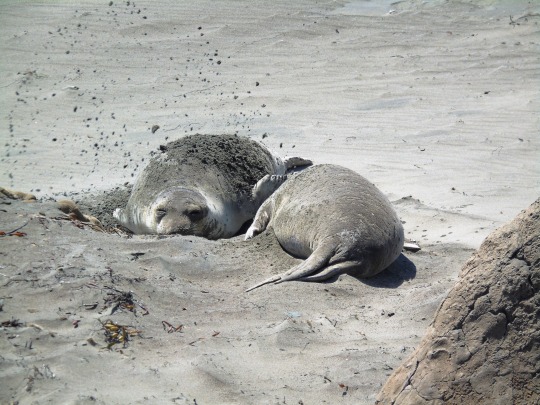
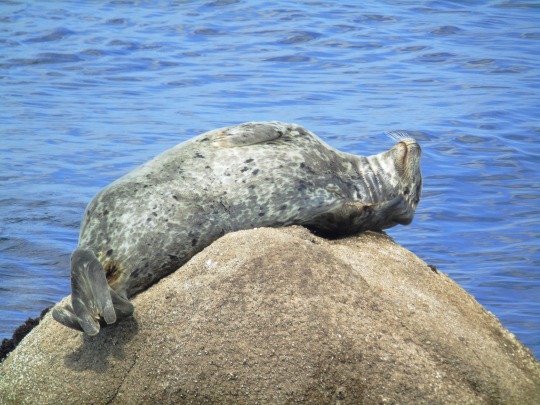
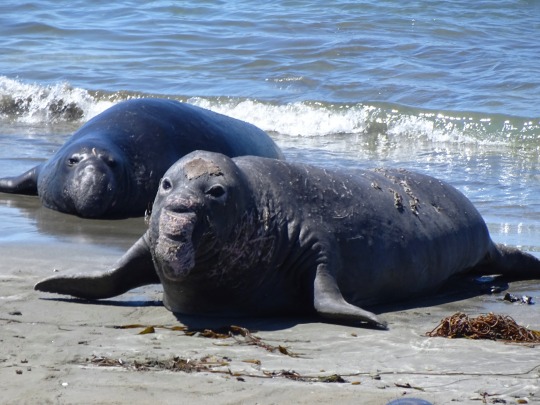





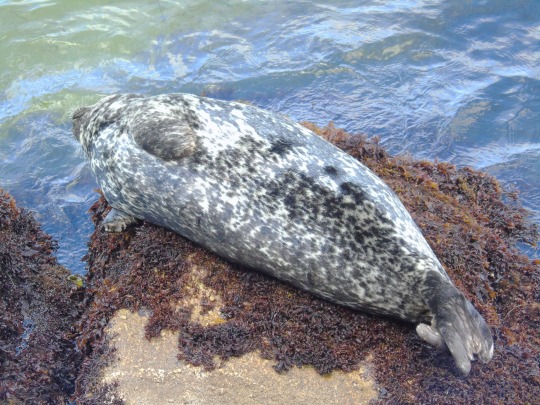
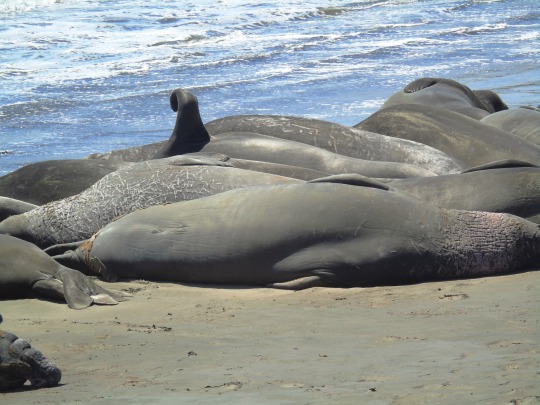
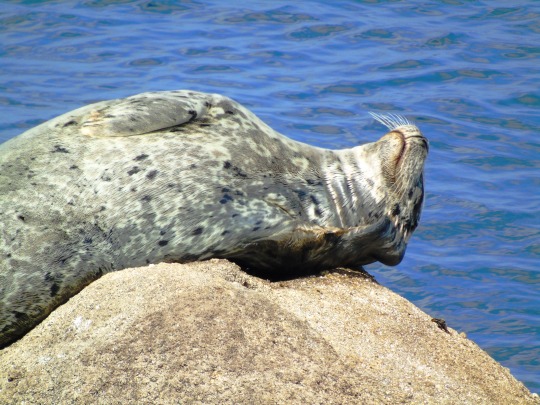

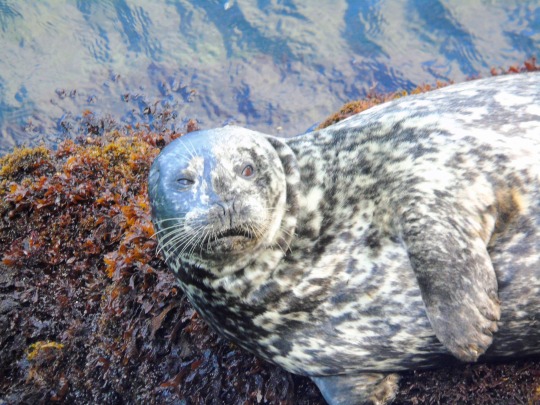
Marine Mammal Rescue Day
Marine Mammal Rescue Day is celebrated on April 27 annually. It is a holiday initiative by the state of California’s Senate. This day honors the people who have made a positive difference in the lives of marine mammals, such as wildlife biologists, veterinarians, and animal care specialists. It is also a day to consider our individual contributions to climate change that affect marine mammals��� lives. For the west coast, spring is the peak of animal rescue season owing to disease and famine. Action is conducted by marine mammal rescue organizations.
History of Marine Mammal Rescue Day
Toni Atkins, a California State Senator, passed the bill that designates April 27 as Marine Mammal Rescue Day. The celebration began in 2017. Gratitude is also given to the Marine Mammal Stranding Network for its continued dedication to the rescue, rehabilitation, and return of creatures stranded off the coast of California. The Marine Mammal Rescue Day celebration may be fairly recent, but the work of these marine mammal rescues has been in existence for far longer.
In 1975, The Marine Mammal Center (T.M.M.C.), formerly known as The California Marine Mammal Center, a private and non-profit organization based in the United States was founded to rescue, rehabilitate, and release injured, ill, or abandoned marine animals. Lloyd Smalley, Pat Arrigoni, and Paul Maxwell created it in Sausalito, California. T.M.M.C. has rescued nearly 23,000 marine mammals since 1975. It also acts as a research and education facility for marine animals such as whales, dolphins, pinnipeds (seals, walruses, and sea lions), otters, manatees, and dugongs.
Many water species require medical assistance due to illness or damage. Polluted waters, marine trash, and illegal fishing gears injure and kill aquatic life in general. The ocean has been polluted and tainted as a result of human acts and inaction. The waters have warmed as a result of climate change, and the patterns in which fish swim have changed. Young marine mammals are frequently unable to travel long distances or dive deep enough to get the food they require. All types of aquatic life are harmed by illegal fishing gear, pollution, and garbage. This is where aquatic mammal rescuers and specialists come in, devoting their time, energy, and resources to safeguard the safety of the marine life that we all should care about.
Marine Mammal Rescue Day timeline
1972
Marine Mammal Protection Act
President Richard Nixon signs the Marine Mammal Protection Act (M.M.P.A.) into law, establishing a national policy.
1975
The Marine Mammal Center
The Marine Mammal Center (T.M.M.C.), a private and non-profit organization based in the United States, is founded.
1992
Foundation for Marine Animal Husbandry
The Foundation for Marine Animal Husbandry, a nonprofit organization in Florida, opens.
2017
Marine Mammal Rescue Day
Toni Atkins, a California State Senator, creates Marine Mammal Rescue Day through a bill.
Marine Mammal Rescue Day FAQs
What are baby whales called?
Baby whales are referred to as ‘calves.’
What are the kinds of marine mammals?
Cetaceans, pinnipeds, sirenians, and marine fissipeds are the four taxonomic groups that make up marine mammals.
Do dolphins lay eggs?
Dolphins are mammals. Thus, they do not lay eggs. Instead, they give live birth to their young.
How to Observe Marine Mammal Rescue Day
Reduce, reuse, recycle: Simple steps to improve your actions to assist in reducing marine body pollution can make a tremendous difference. Reduce, reuse, and recycle as much as possible. Single-use plastic should be avoided and other trash should be disposed of sustainably.
Learn about ocean conservation: Learn as much as you can about ocean conservation. Discover what it entails and how you can help. Know about ocean conservation organizations and consider donating to support their objectives.
Volunteer yourself: Make yourself available to help marine conservation charities. Joining and volunteering with beach cleanup is one of many ways to do so. It may not seem like much but if everyone performed their modest part, we could have a significant influence collectively.
5 Interesting Facts About Marine Mammals
Sea otters have deft hands: Sea otters have deft hands for smashing sea urchins off rocks.
Sleeping with one eye open: Dolphins only sleep with one half of their brain and one eye closed at a time.
Semi-aquatic creatures: Sea lions are semi-aquatic creatures.
Penguin proposal: During mating season, several species of male penguins "propose" to their lady with a pebble.
Elephant relatives: Manatees are related to elephants and have more in common with them than they do with dolphins or whales.
Why Marine Mammal Rescue Day is Important
Human and marine life interaction: Whale watching benefits local economies in a variety of ways. According to studies, people can derive economic benefits from simply knowing that marine mammals are present and healthy even if they are unable to see them.
Marine mammal protection: The Marine Mammal Protection Act protects all 125 species of marine mammals that live in American waters. This makes it illegal to harm a marine mammal in any way that would interfere with its normal behavior.
It promotes a healthy ocean ecosystem: Maintaining the equilibrium of marine ecosystems requires robust marine mammal populations. Reduced numbers of whales, dolphins, or seals can have unpredictably negative consequences for other key species such as fish, birds, and invertebrates.
Source
#Point Arena#Pacific Ocean#Marine Mammal Rescue Day#27 April#travel#MarineMammalRescueDay#animal#wildlife#summer 2017#vacation#USA#original photography#tourist attraction#landmark#Harbor Seal#flora#fauna#Northern elephant seal#California#california sea lion#Monterey#sea otter#Morro Bay#West Coast#Elephant Seal Vista Point#San Simeon#Pier 39#San Francisco#cliff#beach
8 notes
·
View notes
Text

The reverse side of a commemorative $50 coin designed by sculptor Robert Ingersoll Aitken in 1915 🔱
The obverse (front) side features the Roman goddess Minerva, who is traditionally accompanied by an owl; her Greek equivalent Athena has long been part of California’s state seal.
#san francisco#panama canal#world’s fair#e pluribus unum#coin#gold#1910s#owl#pinecones#Athena#Minerva#california#numismatics#state seal#commemorative coin#octagonal#1915#greco-roman mythology#california history#california gold rush#ponderosa pine#pine cones
2 notes
·
View notes
Video
Sutro Baths, San Francisco 11/20/23 by Sharon Mollerus
7 notes
·
View notes
Text

Mwah
5 notes
·
View notes
Text










18 notes
·
View notes
Text




San Francisco 5/29/23 ⭐️
2 notes
·
View notes
Text
looking for a parking spot 🧐
75 notes
·
View notes